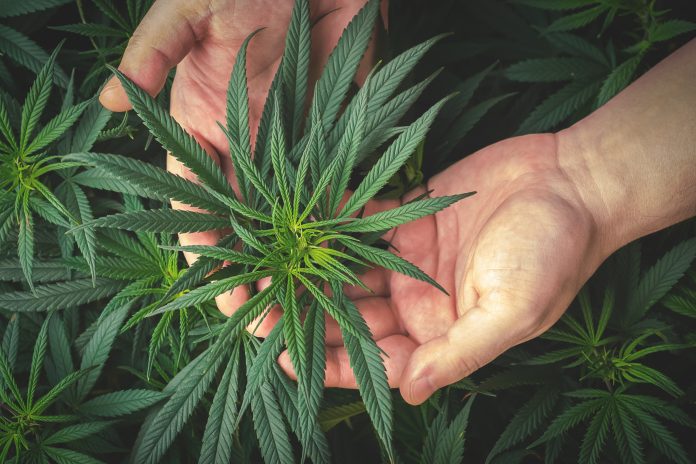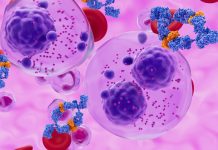Dr David Moorhouse, General Neurologist, discusses the way that different diseases respond to different types of medical cannabis
There has been renewed interest over the last few years in the use of medicinal cannabis to treat a variety of medical conditions. Basic research and understanding of the mechanisms of action of the large number of compounds contained in medical cannabis (cannabinoids) and discovery and study of the Endocannabinoid System [ECS] have contributed to the awakening of interest. The EC system is a biological system which is expressed in both the central and peripheral nervous system and is involved in the homeostatic regulation of a large number of different physiological pathways. The two main receptors in the EC system are CB 1 and CB 2, predominantly located in the brain and peripheral nervous system and immune system respectively. Two of the most intensively studied Cannabinoids are delta tetrahydrocannabinol (THC) and cannabidiol (CBD) which are psychoactive and non-psychoactive compounds respectively. CBD has been shown to have weak agonist activity at the C1 and C2 receptors but significant activity at other receptors including voltage-gated potassium and sodium channel receptors. THC binds predominantly to the C1 and C2 receptors.
Medicinal Cannabis products have been licensed to treat a number of medical conditions. Epidiolex is a Purified CBD product which is licensed as an add on therapy for the treatment of Dravet’s and Lennox Gastaut syndromes, both of which, though rare are therapeutic challenging paediatric epilepsies usually progressing to epileptic encephalopathy. They are extremely difficult to control fully with conventional antiepileptic drugs [AEDs]. In three randomised placebo-controlled clinical trials Epidiolex as add on treatment gave rise to a 38-41% reduction in all seizure types whereas when as compared to the 15-20% seizure reduction achieved with a placebo add-on. Side effects of the medication include sedation and gastrointestinal upset. The exact mechanism of action of Epidiolex is unknown but extensive investigation is ongoing. Further studies of this medication in other epileptic syndromes is underway.
Sativex
Sativex is an oral/mucosal spray which is composed of roughly equal ratios of THC / CBD and is licensed for add on treatment of refractory spasticity In patients with Multiple Sclerosis. The licensing is based on the results of placebo-controlled studies in which Sativex resulted in an improvement in the overall level of spasticity and in the frequency of painful tonic spasms, sleep disturbance and in the quality of daily living. Common side- effects included dry mouth and mild sedation. Another interesting potential area of benefit for this drug is the treatment of spasticity in patients post-stroke, post-spinal cord injury and in young patients with cerebral palsy.
There are a number of trials of medical cannabis in various neuropathic pain syndromes. The results vary with some showing a definite reduction in neuropathic pain whilst others did not show a positive benefit. Side effects such as sedation, dry mouth and cognitive difficulties were noted.
Synthetic Cannabis products
As well as cannabinoids extracted from the cannabis plant there are also Synthetic Cannabis products including Nabilone and Dronabinol which have been licensed for the treatment of anorexia in HIV and in chemotherapy-induced nausea and vomiting.
CBD has potent antioxidant and anti-inflammatory properties and its potential role in the treatment of a number of neurodegenerative conditions including Alzheimer’s disease, Parkinson’s disease and Huntington’s disease is being explored.
Medicinal cannabis prescriptions
It is important that medicinal cannabis products are prescribed by doctors who are on the specialised medical Register and have specialised expertise in the conditions been treated. Careful patient selection is important as there are a number of contraindications to the prescribing of medicinal cannabis products. Patient education, regular review of the patient, goals and presumed outcomes of the treatment as well as laboratory monitoring are essential. Clinical use of these new agents is largely as an add-on to conventional therapies as prescribed and monitored by highly-trained specialists.
For CBD or THC In isolation or in combination to become a first-line treatment for neurological conditions it will be necessary to conduct well-structured randomised controlled clinical trials which will compare these products with standard therapies. Such trials will need to show significant treatment benefits and safety profiles which are the least comparable with or superior to medication which is presently used in neurological conditions by expert neurologists. Physician education, availability of medicinal cannabis products of high quality and reasonable cost is important.
Clinical trials of cannabis-based medical products are underway including a large UK based trial in which it is hoped to enrol up to 20,000 patients with a variety of different medical conditions. Backed by the Royal College of Psychiatrists this trial should be informative and may help to justify optimism for the potential cannabis has in treating growing number of neurological conditions and other systemic diseases.
FDA: Medical cannabis policy
As things stand, the FDA has legalised exactly one cannabis-derived drug product, Epidiolex (cannabidiol). The institution has also approved three synthetic drugs, Marinol (dronabinol), Syndros (dronabinol), and Cesamet (nabilone). The cannabinoid (CBD) product, Epidiolex, is only used in cases of two rare, severe forms of epilepsy. The cannabinoid (CBD) product, Epidiolex, is only used in cases of two rare, severe forms of epilepsy.
However, the American public continue to bring forth the same genre of compelling, anecdotal evidence that has also been publicised in the UK and Canada – even the FDA note that there has been “significant public interest”, which they suggest they are working to provide answers for. At an FDA public hearing in May 2019, medical and pharmaceutical experts gathered to discuss the potential risks of using cannabis.
Speaking at the hearing, “Ned Sharpless, Commissioner of Food and Drugs at the FDA said: “It is important to note that the FDA’s role in the regulation of products containing cannabis or cannabis-derived compounds is not new.
“At the same time, some relevant laws have changed. First, some states have changed their laws to allow for “medical” use of marijuana or CBD, and others have begun allowing for recreational marijuana use, or decriminalized recreational marijuana possession.
“Second, certain federal laws have changed as well. Parts of the Cannabis sativa plant have been controlled under the Federal Controlled Substances Act, or CSA, since 1970 under the drug class ‘Marihuana.’”
He further described the use of CBD and THC as completely “new terrain” for the FDA, a terrain that is differently legislated when the product becomes food or cosmetic. He suggests that there are “real risks” which need to be truly understood.
Dr David Moorhouse is an expert involved in the Cannaray scientific advisory board.












Sativex is cannabis – how can it not be when it is one hundred percent derived from cannabis plants. This, of course, as dictated by British Law, means that both Sativex and Epidiolex are herbal medicines! The British people are not easily fooled!